Text
Royal eccentricity: the wrestling match of two kings
The history of wrestling stretches into ancient times. It was first described in the Greek literature, including in Homer’s legendary literary works such as the Iliad and the Odyssey. Greek wrestling was a popular form of martial art, and it was featured as a sport since the eighteenth Olympiad in 704 BC. After the country’s subjugation by the Romans, Greek wrestling was highly influenced by Roman culture during the period of the Roman Empire.

Men wrestling, detail of an ancient Greek cup
In the Middle Ages and in the Renaissance era, wrestling was practiced by both the nobility and the lower classes. The modern history of wrestling commenced with a rise of its popularity in the 19th century, and nowadays it is a sport for the masses. During the Field of Cloth of Gold of 1520, there was a particularly remarkable wrestling match that happened sometime between the 7th and 24th of June 1520 between King Henry VIII of England and King François I of France.
The Field of Cloth of Gold took place near Calais between the monarchs of France and England in an attempt to preserve the peace established by the Treaty of London of 1518 (a non-aggression pact between the major European nations), and to create an alliance against Charles V, who had been elected Holy Roman Emperor in 1519. In reality, this summit was a throw-down of riches and power in the guise of a constant competition between Henry and François.
At the time, François needed Henry more than his rival needed him. After Charles von Habsburg had become the most powerful man in Christendom, France was encircled by the Habsburg territory. Given the Spanish wealth and the might of their armies, François felt that his country could be in peril, so he was seeking allies against the emperor. François was also intending to restore what he considered his rightful inheritance – the Duchy of Milan and a few other lands in Italy. To change the balance of power in Europe, François needed to have Henry as his ally.
The two kings and their courts spent three weeks of partying. They were involved in jousting, games, and lavish festivities; tents of gold fabric populated the area. According to contemporary sources, 4,100 animals were slaughtered over the course of the meeting. Malmsey and claret flowed from drinking fountains, and into the mouths of the French and the English. The monarchs exchanged gifts and declarations of their “undying love and loyalty” to each other. In the midst of all that spectacular entertainment, Henry once beat François in an archery contest, and as the wine and success went to his head, he challenged his Valois rival to a wrestling match.
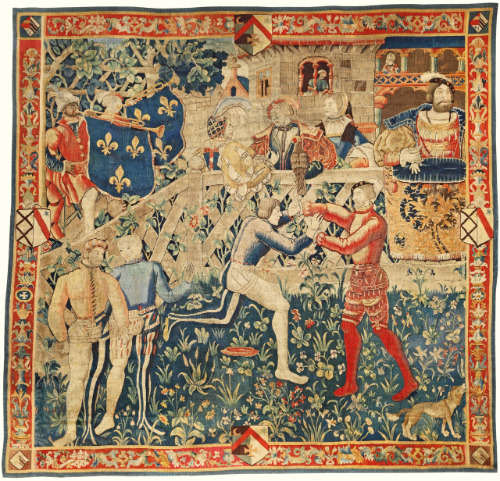
A tapestry of the meeting of Henry VIII and François I, circa 1520, Tournai
At first, François hesitated. He was concerned that if he won the contest, his victory over the narcissistic and spoiled Henry would eradicate all his attempts to make the man his ally. Nevertheless, Henry seems to have been insistent, and François, who was a man of chivalrous nature and high aspirations, finally consented to fight against his Tudor counterpart. François could be as inebriated as Henry was, and his kingly ego did not allow him to refuse the challenge.
Historical accounts of the fight itself are scarce. The two kings went in search of a suitable place for a match. Imagine that they were both attired in their magnificent outfits! Both men were renowned for their great height. Henry excelled in Cornish wrestling (a style established in Cornwall in South-West England), while François wrestled in gouren (a style of folk wrestling that was established in Brittany), or Breton wrestling. The main difference between these two styles was in the type of jacket used: the Breton jacket was tight, while the Cornish wrestler wore it loose.

François and Henry before the fight, from the Showtime series ‘The Tudors’
We don’t know how exactly the fight took place. Most likely, the two courts assembled around their sovereigns, watching their sovereigns fight and each of them cheering their own liege lord. Eventually, François outmaneuvered his counterpart and threw him to the ground. Outwardly, the King of England took his defeat calmly, but inside he must have been boiling with anger, and perhaps, Cardinal Wolsey had to persuade his temperamental king not to destroy the Anglo-French friendship, just as it is shown in one of the episodes in the Showtime series ‘The Tudors’.
Without a shadow of a doubt, Henry’s egotistical soul could not forget and forgive his failure to beat François. The French ruler’s victory became a harbinger of Henry’s future alliance with the emperor. Within two years of the summit, Henry and Charles would join forces and declare war on France, and François would be captured at Pavia in 1525. Nonetheless, years later, Henry would align with François again for the sake of his Valois counterpart’s support of Henry’s marriage to Anne Boleyn. Royal friendships and alliances are fickle, aren’t they?
37 notes
·
View notes
Photo
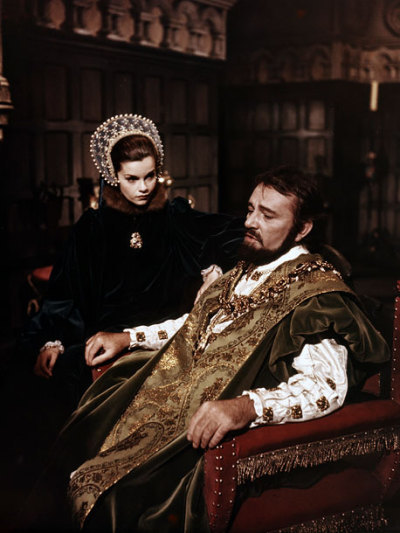
Anne Boleyn and Henry VIII at the 1529 BlackfriarsCourt (from Anne of the Thousand Days (1969)
107 notes
·
View notes
Text
A royal speech pulling at everyone’s heartstrings
On the 21th of June 1529, Catherine of Aragon spoke her famous speech at the Legatine Court at Blackfriars. After years of Henry VIII’s unsuccessful attempts to annul his union with Catherine, Cardinal Wolsey convened an ecclesiastical court in England with a representative of the Pope presiding – Cardinal Campeggio. The Papal Legatine court was held to determine whether the king’s first marriage was legal and valid.
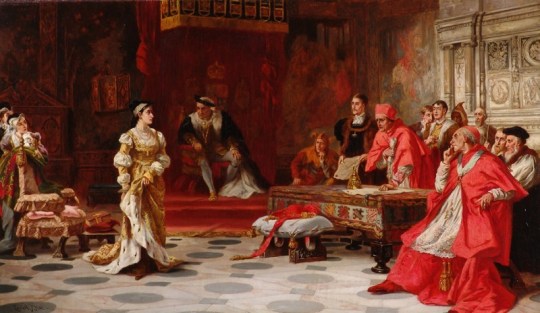
Catherine of Aragon appearing before the Legatine Court at Blackfriars in 1529
The monarch was the first to speak to the court and people. Despite his burning desire to get rid of his consort, he cheered her as she entered. Then Henry pronounced a speech about his “love” for his wife, stressing that his conscience was badly troubled over the fact that he had married his elder brother’s widow. The faux sweetness of his tone must have been obvious, for he was so obsessed with Anne Boleyn at the time that he wanted Catherine out of his life forever.
However, the court at Blackfriars turned quite surprising for Henry. His queen circumvented the king’s plans by appealing directly to her royal spouse in the most dramatic way that made all those in attendance sympathetic to her cause, whether she told the truth or lied.
According to contemporary sources, Catherine said:
“Sir, I beseech you for all the love that hath been between us, and for the love of God, let me have justice. Take of me some pity and compassion, for I am a poor woman, and a stranger born out of your dominion. I have here no assured friends, and much less impartial counsel…
Alas! Sir, wherein have I offended you, or what occasion of displeasure have I deserved?… I have been to you a true, humble and obedient wife, ever comfortable to your will and pleasure, that never said or did any thing to the contrary thereof, being always well pleased and contented with all things wherein you had any delight or dalliance, whether it were in little or much. I never grudged in word or countenance, or showed a visage or spark of discontent. I loved all those whom ye loved, only for your sake, whether I had cause or no, and whether they were my friends or enemies. This twenty years or more I have been your true wife and by me ye have had divers children, although it hath pleased God to call them out of this world, which hath been no default in me…
When ye had me at first, I take God to my judge, I was a true maid, without touch of man. And whether it be true or no, I put it to your conscience. If there be any just cause by the law that ye can allege against me either of dishonesty or any other impediment to banish and put me from you, I am well content to depart to my great shame and dishonour. And if there be none, then here, I most lowly beseech you, let me remain in my former estate… Therefore, I most humbly require you, in the way of charity and for the love of God – who is the just judge – to spare me the extremity of this new court, until I may be advised what way and order my friends in Spain will advise me to take. And if ye will not extend to me so much impartial favour, your pleasure then be fulfilled, and to God I commit my cause!”
Just imagine! Catherine stood on her knees before Henry as she gave the speech of her life. It was a posture of absolute submission to her husband, but not surrender to his wishes. Had this speech been prepared in advance by Catherine? Had she planned to make it so emotional?

Catherine’s dramatic speech before Henry VIII and the Legatine Court
Catherine was a very educated and smart woman, who was truly a political animal. She was destined to become herself as a daughter of Isabella of Castile and Ferdinand of Aragon. The purpose of planning a speech is to discover what should be said to an audience so that it has the most profound impact possible; preparation is also necessary to learn what should be omitted from the completed speech. I believe that Catherine had made every effort to ensure that at the court, her speech would be so moving that it would pull at everyone’s heartstrings.
Henry gave his stubborn consort the option of entering a convent. At the time, history knew precedents of royal annulments. In 1498, Louis XII of France had claimed that his first spouse, Joan of France, was physically deformed, which had prevented him from consummating their union. His marriage to Joan had been childless. Louis had needed a fertile young wife (Anne of Brittany) to bear him sons in order to secure the Valois line, which had become highly important after the death of Charles VIII of France. At first, Joan had resisted this charge, but the Pope had granted the annulment. Then Joan had stepped aside and turned to the spiritual life.
Nevertheless, Catherine of Aragon seems to have never considered allowing Henry to marry Anne or any other woman. Could Catherine act differently? Her strong opposition to Henry’s annulment was caused by her steadfast desire to remain his wife for the rest of her life. She seems to have believed that it was her destiny to be Queen of England. She defended her right for the crown, as well as her daughter’s right to inherit the Tudor throne. If only Catherine had gone to a convent, how everything would have been different for England and for Henry, as well as for Mary Tudor, who could have been much happier in this case than she was in history.

Catherine and Arthur, Princes of Wales (from the Spanish Princess Series)
Had Catherine really been a virgin when she had married Henry? Or had she consummated her marriage to Arthur, Princes of Wales, before his death in 1502? The subject of Arthur’s health has been debated by historians over the years: some say that he might have been sickly, while others suppose that he had been a robust, healthy young man. Regardless of his health, Arthur was old enough to have reached his puberty by the time of his wedding to Catherine at the age of 15. Although the couple had been subjected to a standard bedding ceremony, later Catherine swore that she had never known Arthur carnally. Many historians and fans claim that Catherine’s famous piety proves the truth of her words, for such a religious woman could not endanger her immortal soul by lying. But wasn’t Catherine her parents’ daughter? The truth is shrouded in mystery.
#Catherine of Aragon#King Henry VIII#Henry VIII#Tudor period#Tudor history#the Tudors#English history#royals
27 notes
·
View notes
Text
The Italian Wars: the Truce of Nice of 1538
On this day in history, the 18th of June 1538, the Truce of Nice was signed, ending the Italian War of 1536–38 between King François I of France and Holy Roman Emperor Charles V.

The Italian Wars, which are often referred to as the Habsburg-Valois Wars, were a series of military conflicts between 1494 and 1559. They included the following campaigns:
First Italian War of 1494-1498, or King Charles VIII’s War;
Second Italian War, or King Louis XII’s War (1499–1504);
War of the League of Cambrai (1508–1516);
Italian War of 1521–1526, which ended with the Treaty of Madrid;
War of the League of Cognac (1526–1530), which included the Treaty of Cambrai;
Italian War of 1536–1538, which ended with the Truce of Nice;
Italian War of 1542–1546 when both Charles V and Henry VIII invaded France;
Italian War of 1551–1559, which finished with the acceptance of the Peace of Cateau-Cambrésis by Henri II of France, who renounced all his claims to Italy in this treaty.
The Valois-Habsburg Wars altered the political landscape in Italy and Europe. Italy was a center of conflicts between the Houses of Habsburg and of Valois for decades. Throughout those wars, territories were conquered and lost; numerous men from participating countries were killed; ruling dynasties were overthrown and new ones established; some Italian states were annexed and others appeared. Eventually, the Habsburgs won the battle for dominance in the region, which marked the end of Italian political independence. Yet, despite the Spanish control in centuries to come, there would still be some room for maneuver for small Italian city-states and for princes.
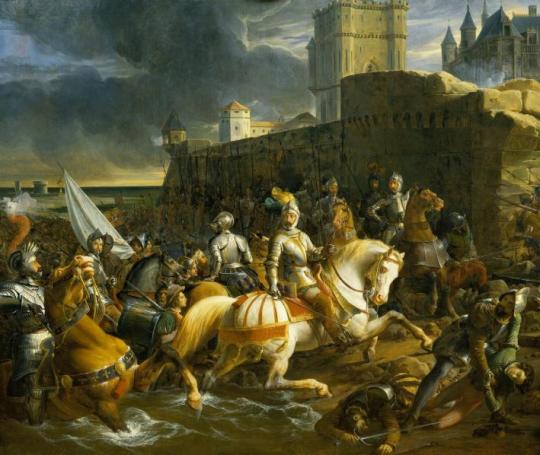
The Valois and the Habsburgs both had dynastic claims on Italy. The Italian War of Charles VIII was triggered by his hereditary claims to the throne of Naples, which had once ruled by an Angevin dynasty. The Spanish monarchs possessed the hereditary claim to Naples as heirs to Alfonso V of Aragon, who had subjugated the kingdom and left it to his illegitimate son, Ferrante, in 1458. The d’Orléans and d’Angoulême, the cadet branches of the Valois royal dynasty, claimed to be the rightful heirs of the Visconti Dukes of Milan, who had died out in 1447.
As of 1498, the Duchy of Milan was an Imperial fief. When in the same year, Louis d’Orléans, grandson of Valentina Visconti, ascended the French throne, he considered his claim to Milan part of his inheritance. Valentina was also the paternal grandmother of François I, Louis’ cousin, so François considered Milan his inheritance. Soon after his accession in 1515, François I continued Louis XII’s campaign against the League of Cambrai in Italy and emerged triumphant in the Battle of Marignano; according to the treaties of Noyon and Brussels signed in August 1516, the entirety of northern Italy was surrendered to France and her ally, Venice, including the Duchy of Milan.
Nevertheless, holding the Duchy of Milan was more difficult than François had initially planned. As soon as Charles von Habsburg (heir to the Spanish kingdoms as well as the lands of the Dukes of Burgundy) came to power, he reminded the world that most of northern and central Italy must be part of the Holy Roman Empire. Charles reconquered Milan from the French in 1521 and granted it to Francesco Sforza, Duke of Milan, in 1522.

King François I, Emperor Charles V, and François’ capture at Pavia
In order to restore his holdings, François personally led his troops into Lombardy in 1525, but it all ended with his captivity at Pavia on the 24th of February 1525. Later the French monarch was imprisoned in Spain for more than a year, and then he was compelled to sign the Treaty of Madrid in January 1526, in which he gave up his claims to Italy, Flanders, and Burgundy in exchange for his release from prison. Then two French princes – Dauphin François and Henri, Duke d’Orléans – would spend several gruesome years in Spain, held as hostages by Charles.
However, not even the captivity of François’ sons destroyed his designs on Italy. Between 1530 and 1536, François was determined to recover at least some of what he had lost. He still had many supporters in Italian city-states; there were also opponents of the emperor who were dissatisfied with his rising power. Throughout his life, François firmly believed that Genoa, Milan, and Asti were all rightfully his, but recovering Milan was his main goal. He stated that half of the lands of Savoy should belong to him as heir of his mother, Louise, who had passed away in 1531.

At the beginning of 1536, King François told his council that Charles V had become too powerful in Italy and that his archrival’s appetites for conquests must have been curbed. In February 1536, many legions of French infantry marched towards Savoy and soon occupied it. In late March, a French army (24,000 infantry and 3,000 horses) under the leadership of Philippe de Chabot, Admiral de Brion, captured Piedmont and then entered Turin in early April, but they failed to take Milan. At the same time, French partisans in Asti overthrew the Imperial viceroys.
In response, on the 25th of July 1536, the Imperial army entered Provence, taking the coast road through Nice. At the same time, Henry, Count of Nassau, commenced an invasion of Picardy from the north. François and his generals concentrated their attention on the south of their country, where Montmorency used a scorched-earth strategy in order to devastate the naturally fertile land so as not to leave any supplies for the invaders. The Provencal city of Aix fell to Charles on the 13th of August, and the emperor made his camp there with his army. As the French blocked all the routes to Marseilles, Charles could not go there to get fresh supplies for his soldiers, and thousands of his men died from disease and famine.
While the Imperial troops were blocked in Provence, the French sent reinforcements (a force of 10,000 Italian infantry and a few hundred horse) to Piedmont. More Italian troops, which served Fran��ois, were raised by Guido Rangone and other military nobles from southern Lombardy. In early 1536, François and Suleiman the Magnificent established an alliance between the Ottoman Empire and France. By the end of 1536, a Turkish fleet was stationed near the coast of Genoa. However, the garrison of Genoa was reinforced, and there was no uprising of Fregoso partisans (they served François) among the local populace. François’ plans to occupy Genoa did not materialize, and soon Charles returned to Italy.
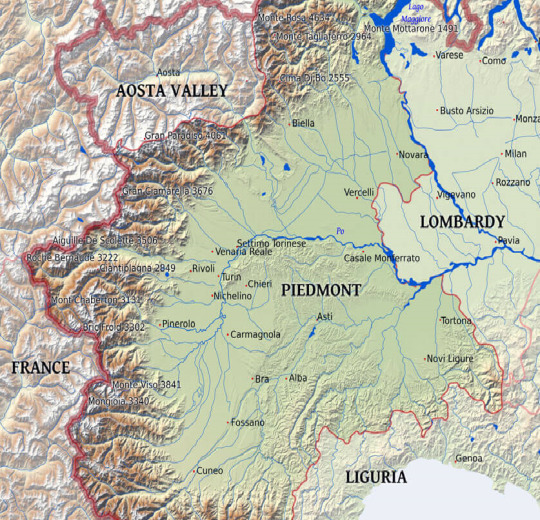
The war depleted the French treasury. François felt that negotiations with Spain were necessary, but he yearned to be in possession of as much of Piedmont as possible. Therefore, he joined his army and led his men in local skirmishes, which resulted in the occupation of the territory east of Turin to Monferrato and south to the Tanaro. In the meantime, Charles began to slowly recover control of the countryside in Piedmont, and to blockade the towns and villages held for the French.
Nevertheless, Charles V was besieged by internal and external political problems. The Turks and corsairs were becoming more active in the Mediterranean. The stability in the German lands was destroyed by religious and political troubles, and it was high time for the emperor to use a variety of means in attempt to stop the spread of Protestantism. There also was a brewing rebellion in the Netherlands. Thus, Charles was ready for a truce in Italy, just as François was.
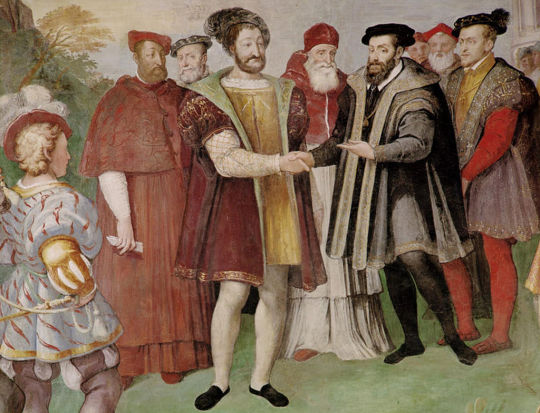
King François I and Emperor Charles V, Truce of Nice 1538
Peace talks were opened on the border between France and Spain. However, François refused all the Imperial proposals because the crux of their differences was the Duchy of Milan. As neither François nor Charles was willing to compromise, Pope Paul III became a mediator between them. Finally, the congress did finally take place at Nice, where the two rulers reluctantly agreed on a truce of ten years, and that each would keep what he held in Italy at that moment.
The Habsburg-Valois wars were far from over. The Truce of Nice did not give the King of France what he wanted to have the most – the Duchy of Milan. Even if one of his sons could inherit the duchy, François dreamed of ruling it himself. The ruler would keep chasing his ill-fated dream, and Milan would remain a major cause of contention between Charles and him in years to come.
All images are in the public domain.
Text © 2019 Olivia Longueville
#king Francis I of France#Charles V Holy Roman Emperor#the Italian Wars#the House of Habsburg#the House of Valois#wars#royals
11 notes
·
View notes
Text

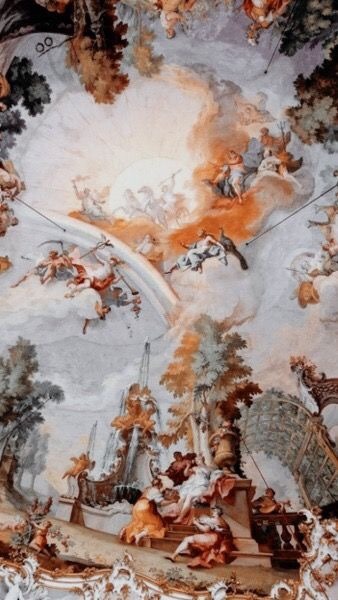

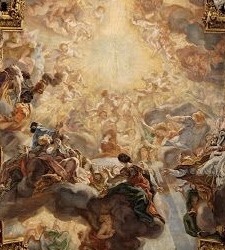

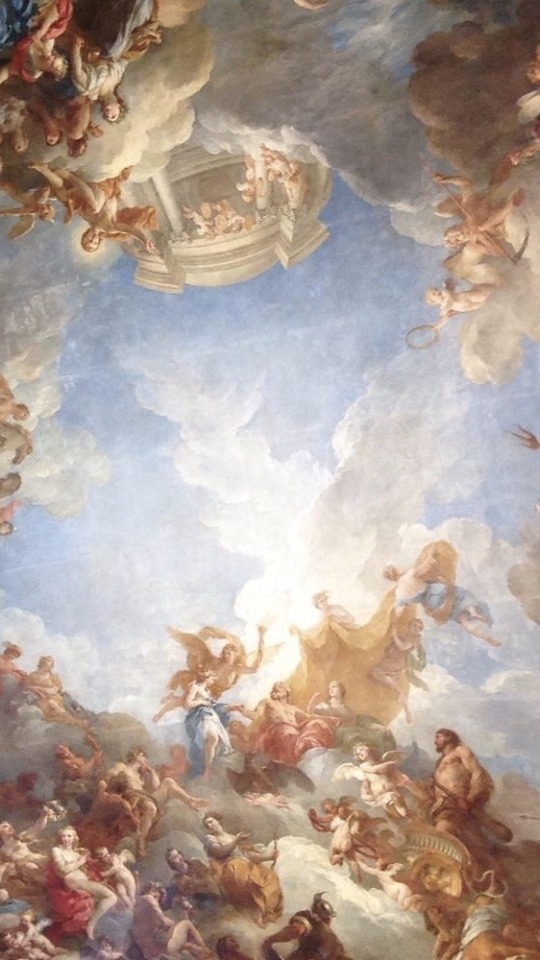
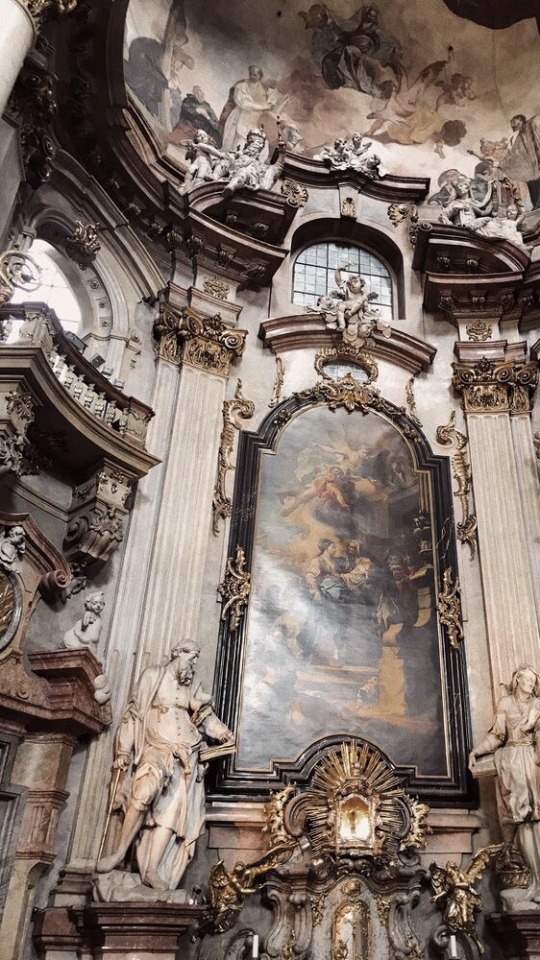
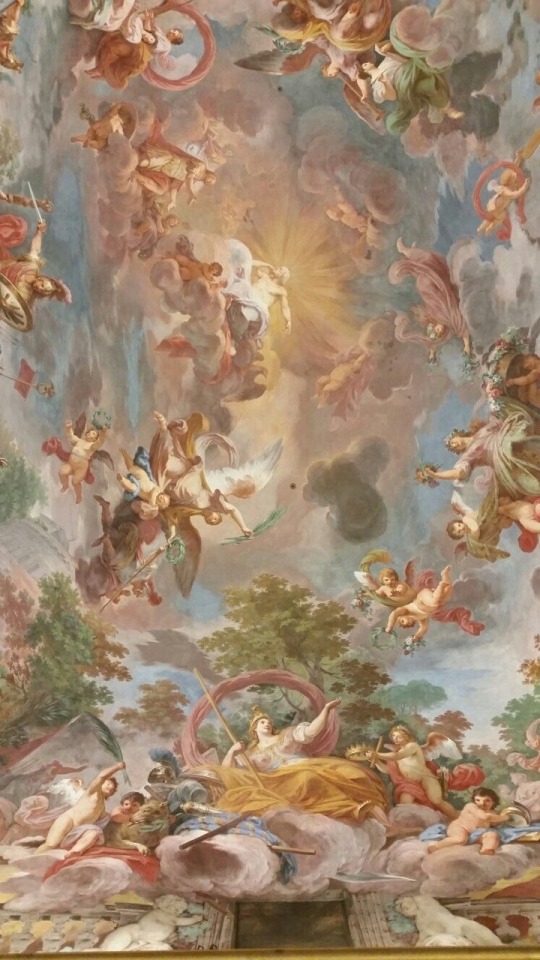
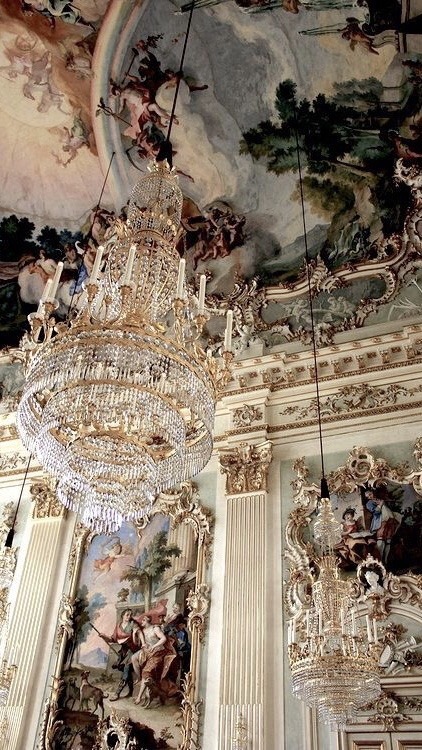
Renaissance
•please like or reblog if you use
22K notes
·
View notes
Photo

Agnolo Bronzino - The Portrait of Costanza da Sommaia. 1540
49 notes
·
View notes
Photo

La Naissance de Vénus
Circle of François Boucher (French, 1703-1770)
Oil on canvas
94 notes
·
View notes
Text
Henry FitzRoy: a product of Henry VIII’s lust for Bessie Blount
Henry FitzRoy, the only acknowledged illegitimate son of Henry VIII, was born on the 15th of June 1519. As Cardinal Wolsey sent the boy’s mother, Lady Elizabeth Blount, to live in the prior’s house of the Priory of St Lawrence in Blackmore, Essex, before her pregnancy became visible to court, little Henry came into the world there. The infant was named Henry after his royal father.
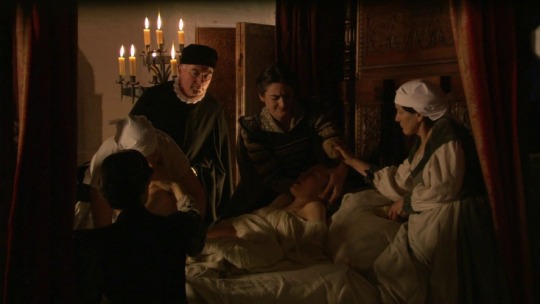
The birth of Henry FitzRoy by Elizabeth Blount in the ShowTime The Tudors
The boy’s mother is more commonly known to history as ‘Bessie’. The twelve-year-old Lady Blount became a maid of honor to Queen Catherine of Aragon in 1512 or 1513. In her book “Bessie Blount: Mistress to Henry VIII”, the British historian Elizabeth Norton writes:
“Bessie, with her good looks, musical ability and skill in dancing, was one of the most accomplished ladies at Henry VIII’s court. She excelled in the pageantry of the court and, with a little help from her family connections, soon found herself as one of the stars within the queen’s household.”
At the beginning of his reign, the court of Henry VIII and Catherine was a whirlwind of feasting, dancing, hunting, wrestling, masquing, and revels of all kinds, with tournaments having been a regular feature of court life. Teenaged Bessie must have delighted in all those various entertainments and in the principles of chivalry and courtly love, with which the tournaments were connected. The young and athletic Henry loved jousting, and during the tournaments, when he appeared before the audience on a warhorse draped in cloth of gold, his appearance was truly magnificent. At one of the festivities, in which she shone like a star, Bessie first came to the attention of her liege lord. How could Bessie resist such a man?
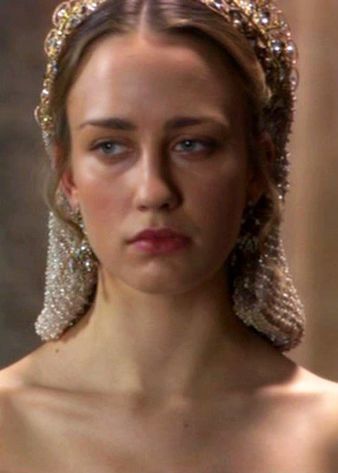
It seems that the King of England was attracted to Bessie’s sweet and youthful loveliness. The first mention of their relationship occurs in a letter written by the king’s closest friend – Charles Brandon, Duke of Suffolk – on the 25th of October 1514, in which after speaking about the life of the king’s sister, Princess Mary Tudor, in France, the duke ended the letter by saying:
“I beseech your Grace to tell Mistress Blount and Mistress Carew the next time that I write unto them or send them tokens they shall either write to me or send me tokens again.”
Lady Blount seems to have succumbed to the king’s charms in 1514. The evidence for Bessie’s affair with Henry is scant, just as it is with most of his other liaisons. At the time, the king did not wish to make his extramarital amours public, perhaps because he did not want to distress Catherine who was often pregnant, and there was still a possibility for her to bear a male heir. At New Year 1515, Bessie was reported to have danced with Henry merrily during the feast. In July 1515, the ruler appointed his paramour’s father, Sir John Blount, one of the “King’s Spears” or Royal Guard that was a new royal bodyguard, established by Henry VIII when he came to the throne. According to Norton, Bessie was not only one of the loveliest creatures at court, but also an intelligent woman who shared with the king his literary interests and his taste for pageantry. Due to Henry’s desire for secrecy, no correspondence between the lovers has survived.
It is likely that Bessie could have fallen, even fleetingly, in love with her young, educated, and charismatic sovereign. Their rendezvous were clandestine, and only the king’s intimate friends (Charles Brandon e. g.) were aware of them; I wonder whether Catherine of Aragon knew about her husband’s new relationship. Unlike many of Henry’s other affairs, the monarch’s liaison with Bessie was not short-lived and lasted until she bore him an illegitimate son, Henry FitzRoy.

Given Catherine’s unsuccessful childbearing history, Henry must have been over the moon with FitzRoy’s birth. Finally, the Tudor ruler had a son whom he had always yearned to have! But his mother was not his spouse, so the child could not be his heir to the English throne. At the same time, in Henry’s eyes, FitzRoy’s existence proved that he was capable of fathering a healthy son. Perhaps from the moment of the infant’s birth, Henry began to blame Catherine for the lack of his male progeny, which for him was a slur on his manhood. It is highly likely that FitzRoy’s birth was a turning point in the lives of Catherine and Henry as the rock-solid core of their relationship cracked, and their previously good marriage became a travesty of true love, disguised by Henry’s regal coldness to his aging wife and by Catherine’s sangfroid that concealed her anguish.
We don’t know for a certainty when and how Henry VIII first met his son. Soon after Bessie’s labor, the infant was baptized at the chapel at Blackmore with Cardinal Wolsey acting as his godfather. Fitzroy was created Duke of Richmond and Earl of Nottingham, for the monarch could not deny his only living son such privileges. In spite of the king’s gratitude to Bessie and his former fascination with her, he nevertheless broke his relationship with Lady Blount. The boy’s upbringing remains shrouded in mystery until the moment FitzRoy was set up in his own establishment and entered Bridewell Palace (one of Henry VIII’s residences in London).

In 1522, Bessie Blount married Sir Gilbert Tailboys or Talboys, 1st Baron Tailboys of Kyme (a man from Wolsey’s household). The couple went on having three children: Elizabeth, George and Robert. Elizabeth Norton convincingly argues that the monarch may also have been the father of Bessie’s daughter, Lady Elizabeth Tailboys, as later Henry was too much interested in this young woman’s marriage and property rights, which could indicate that she was his secret daughter.
Despite his death of tuberculosis in his adolescence, Henry FitzRoy would become the longest-lived of Henry VIII’s sons. Many historians claim that Henry VIII may have fathered other children out-of-wedlock whom he did not acknowledge, but this cannot be proved.
You can learn more about FitzRoy’s life in my article: Death of Henry FitzRoy (http://olivialongueville.com/2016/07/23/death-henry-fitzroy/).
All images are in the public domain.
Text © 2019 Olivia Longueville
34 notes
·
View notes
Photo


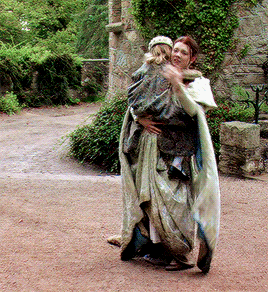
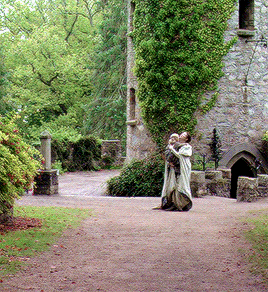
30 April 1536 ✧ “Never shall I forget the sorrow which I felt when I saw the most serene queen, your most religious mother, carrying you, still a baby, in her arms and entreating the most serene king your father, in Greenwich Palace, from the open window of which he was looking into the courtyard, when she brought you to him. I did not perfectly understand what had been going on, but the faces and gestures of the speakers plainly showed that the king was angry, although he could conceal his anger wonderfully well.” - Alexander Alesius
2K notes
·
View notes
Photo

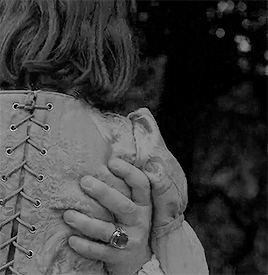
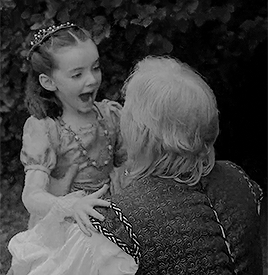
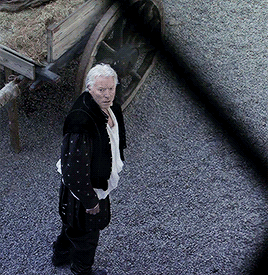
What about your daughter? Will you watch her suffer? Will you watch her die? Tell me Boleyn, was it all worth it?
400 notes
·
View notes
Text
Death in Youth: Henry the Young King
Henry the Young King was born on the 28th of February 1155. He was not meant to be a king: at the time of his birth, he was just a ‘spare’ son. However, his elder brother, the three-year-old William, passed away in August 1153, making Henry the eldest son and heir of Henry II.
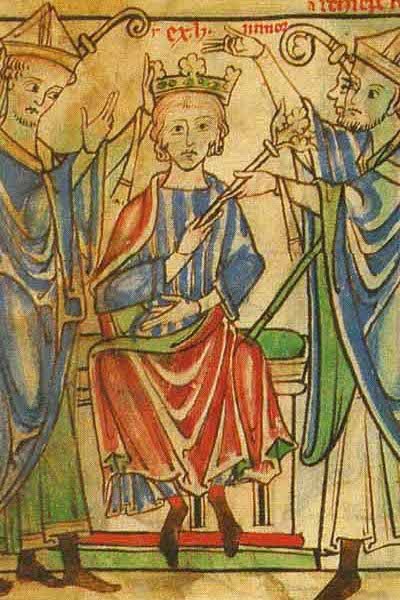
Little Henry was specially groomed for kingship. He was the apple of his father’s eyes; later, his younger brother, Richard, would become his mother’s favorite. At the age of five, in November 1160, Henry was betrothed to the three-year-old Margaret of France, daughter of Louis VII of France and Constance of Castile (her dowry was the much-disputed territory of Vexin).
In June 1170, the fifteen-year-old prince was crowned king during Henry II’s lifetime. The practice of crowning the heir during his father’s lifetime was started by Hugh Capet (in December 987, he arranged the coronation of his son, Robert), and continued by the Capetians until the time of Louis VII, which positively contributed to the dynasty’s stability and, most importantly, allowed to avoid even a momentary interregnum and chaos. So, Henry became titular King of England after the coronation, as well as Duke of Normandy, Count of Anjou and Maine.
Margaret was not crowned along with her husband due to the exile of Archbishop Thomas Becket. Henry and Margaret were married on the 27th of August 1172 at Winchester Cathedral, and then Henry was crowned King of England again, this time alongside with Margaret, by Rotrou, Archbishop of Rouen. Margaret’s only pregnancy ended when she gave birth prematurely to the boy, named William, on the 19th of June 1177, but the infant died three days later. The couple did not have any other children.

At his coronation banquet, the Young King is served by his father, Henry II
From the moment of his coronation, Henry was called Henry the Young King not to confuse him with his royal parent. He seemed not to have been interested in the day-to-day state affairs, unlike Henry II. However, what frustrated the young man was that he had no real power, as his father failed to delegate him power in England. Yet, Henry was a political force to reckon with, for he was extremely popular with the people. Henry the Young King yearned to become more independent, and at the end of his life, his frustrations morphed into an open rebellion – the Revolt of 1173–74.
A formal reason for the rebellion was Henry II’s decision to bequeath three castles, which were located within the lands of the Young king, to his youngest son, John. In response nobles, who could gain something from the family quarrel, goaded Henry into turning against his father. His mother, Eleanor, and many others, who were disappointed by Henry II’s possible involvement in the murder of Thomas Becket in 1170, joined the cause. As a result, soon many of Anglo-Norman, Norman, Angevin, Poitevin, and Breton lords betrayed Henri II and joined the uprising. Later, after Henry the Young King temporarily withdrew to the court of his father-in-law, Louis, and then he and his brothers, Richard and Geoffrey, forged an alliance with France against Henry II.
Sometime between the end of March and the beginning of May 1183, Eleanor of Aquitaine was captured by her husband on the way to her sons. Nevertheless, Henry the Young King still fought against the old English monarch, for now he had the kings of France and Scotland, the counts of Flanders, Boulogne, and Blois as his allies, and numerous aristocrats from the Angevin lands also supported him. The wheel of fate turned around again: in the opening days of June 1183, Henry contracted bloody flux, and soon it became obvious that he was not going to survive.

Tomb and effigy of Henry the Young King in Rouen Cathedral
On his deathbed, Henry the Young King reportedly asked to be reconciled to his father, but Henry II, fearing a ruse, denied his request. At the age of twenty-eight, Henry breathed his last at Martel, near Limoges, on the 11th of June 1183. He died clasping a ring his father had sent him as a sign of his forgiveness. According to contemporary accounts, Henry II said later:
“He {Henry the Young King} cost me much, but I wish he had lived to cost me more.”
All images are in the public domain.
Text © 2019 Olivia Longueville & J. C. Plummer
10 notes
·
View notes
Text
Marriage of Henry VIII’s marriage to Catherine of Aragon
Today is another anniversary of Henry VIII’s marriage to Catherine of Aragon. Henry married his brother’s widow nearly six years after they had originally been betrothed, and almost 7 years after Prince Arthur’s death. The wedding took place in a private ceremony in the queen’s closet at Greenwich Palace, and then preparations began for their joint coronation.
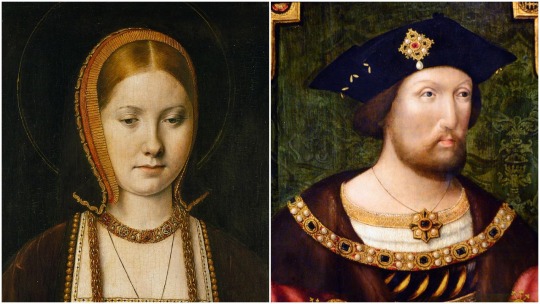
After Arthur’s passing in April 1502, Catherine was left with the title of Dowager Princess of Wales. Although the political reasons for an alliance between England and Spain still existed, she was not betrothed to Henry, the new Prince of Wales, straight away. During the next several years, the conflict over Catherine’s substantial dowry escalated between the two families. Despite her union with Arthur, the bride’s dowry was not paid, and Henry VII of England reduced her allowance significantly in order to put pressure on her parents to pay the dowry. Finally, in June 1503, Catherine and Henry were formally betrothed, assuming that they would enter into matrimony after he turned fifteen. But nothing was set in stone yet.
At one point, the forty six year old English ruler said that Princess Catherine should wed him instead of his son, but Ferdinand and Isabella found this proposal horrible while being still keen on forging an alliance with England. Catherine’s union with Arthur was defined in the rules of the Catholic Church as consanguinity. Therefore, to marry, Henry and she would need a papal dispensation, the final version of which was ratified in August 1503. However, Isabella of Castile died in late 1504, leaving no surviving male issue, and Catherine’s elder sister, Juana, became the Queen of Castile. This changed the European political landscape in the eyes of the Tudor king.

Young Catherine of Aragon and Prince Harry from the Spanish Princess (TV Mini-Series 2019)
In spite of Henry VII’s constant demands for its payment, Ferdinand of Aragon offered to settle the matter only in 1508, but there was still no agreement on the amount to be paid. Some other things were uncertain as well. Meanwhile, after having lived in miserable conditions for several years (Catherine was forced to sell her jewelry and her plate to cover her life expenses), the princess asked to return to Spain and join a convent.
Fate intervened: Henry VII breathed his last on the 21st of April, 1509. According to some sources, Henry VIII, the new king, told the Spanish ambassador that he would marry Catherine quickly because it was his father’s deathbed wish. Nevertheless, we should take it with a pinch of salt because Henry VII obviously had second thoughts about this union, so he was unlikely to say such a thing. After Isabella’s passing, Catherine was daughter of only one reigning Iberian monarch, becoming far less desirable as a wife for the young Prince Harry. The fact that the marriage did not take place during Henry VII’s lifetime confirms that the old king had his doubts.
Henry VIII did not have to marry Catherine, but he chose her. Before his death, Henry VII surreptitiously started negotiations for a marriage between his heir-apparent and several European princesses. One of them was Eleanor of Austria, Catherine’s own niece and the future Queen of Portugal and France. But what if Henry had selected to marry someone else?
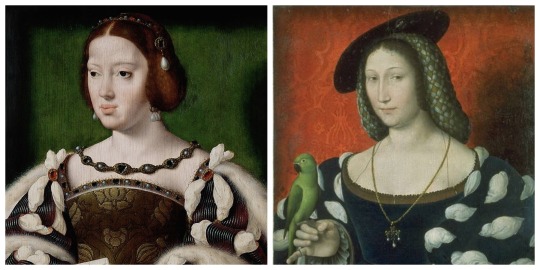
Portraits of Eleanor of Austria and Marguerite d’Angoulême
There were other available princesses for the young monarch’s marriage, and they were younger than Catherine of Aragon. For example, Eleanor of Austria or Marguerite d’Angoulême, King François I’s elder sister. If Henry VIII had married any of these women, their childbearing history could have been better than Catherine’s, and if his wife had given him a healthy male heir, then Henry would not have had six wives. Unless some genetic or medical condition did not cause Henry’s reproductive woes. Whatever it was, we will never know, but it is interesting to speculate.
All images are in the public domain.
Text © 2019 Olivia Longueville
#King Henry VIII#Queen Catherine of Aragon#catherine of aragon#Tudor period#Tudor dynasty#the Tudors#royals
8 notes
·
View notes
Text
“The Field of the Cloth of Gold”
On the 7th of June 1520, the sensational meeting of Kings of England and France occurred near Calais that was to become known to history as “The Field of the Cloth of Gold”. This luxurious meeting became the standards to which international peace treaties were measured in many years to come. There was the long history of tensions and rivalries between England and France, which the meeting was intended to put an end to.
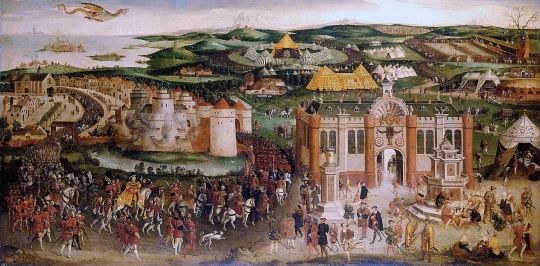
King Henry VIII and his first wife, Queen Catherine of Aragon, arrived in Calais on the 31st of May. Henry should have reached the English stronghold of Guînes on the same day, but instead he dispatched a page to the French ruler that the ladies of his large retinue of about 5,000 people were exhausted after the journey across the English Channel and needed a few days of rest. King François I did not object to the delay, but he nevertheless warned Henry to be at the meeting place on the planned day in time.
While the Tudor court rested for four days in Calais, King François and, his first wife, Queen Claude of France, together their huge train, were in the French town of Ardres. Accompanied by his own train of a hundred gentlemen clad in crimson velvet, Cardinal Wolsey paid a visit to François. The cardinal loved pomp and rode a mule with harnessing of fine gold and trappings of crimson velvet when he was met by French courtiers at Ardres. François hosted a banquet in Wolsey’s honor, and one would like to know what they discussed; there was gossip that the cardinal proposed to mediate between François and Charles V, who was only fifty or sixty miles away from Calais in Flanders at that time.
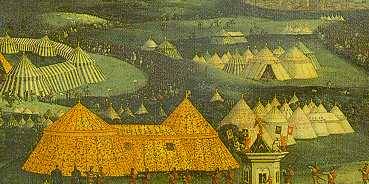
On the 5th of June 6, the French and English pitched their tents (approximately 2000!) near the field. However, there were last minute difficulties: Henry learned that the French had stationed between 3,000 and 4,000 soldiers nearby, so the summit was almost called off, but François prudently withdrew the troops. Most likely, memories of The Hundred Years’ War were still fresh in the minds of the French, so they resolved to try and defend the Valois family in case the English attacked.
A French historical account describes François I’s magnificence as he left Ardens.
“The King wore a cap of black velvet with feathers of the same color, and some large jewels in it very well set, which the King estimates at 2,000 ducats. His doublet was embroidered with gold knots, the shirt protruding from the slashes, the tags of which were most beautiful jewels. His breast was bare, and he had sleeves (manegetti). Over the doublet was a cloak of cloth of gold embroidered; at the back of the cloak a certain bit of cloth of gold slashed, looking like a half cape, or well nigh a half mantle, fastened over the left shoulder, which half cape or mantle was costly and ornamented with large jewels. On his legs, he wore white boots (burzachini bianchi).”
This description does not mean that the Valois monarch did not wear a shirt at all. The phrase “his breast was bare” refers to a relative lack of jewels adorning that part of his clothes. Perhaps the king’s doublet was less lavishly embroidered on the front than on the sleeves.
An English contemporary account describes Henry VIII’s splendid appearance:
“The King of England wore a very handsome and costly doublet of cloth of silver, with a girdle and apron (traversa) or “sbarra” from the cincture to the shoulder, of cloth of gold studded with very beautiful jewels, and a black velvet cap with jewels and black feathers; and he rode a very handsome bay courser with a “trapper” embroidered in gold.”
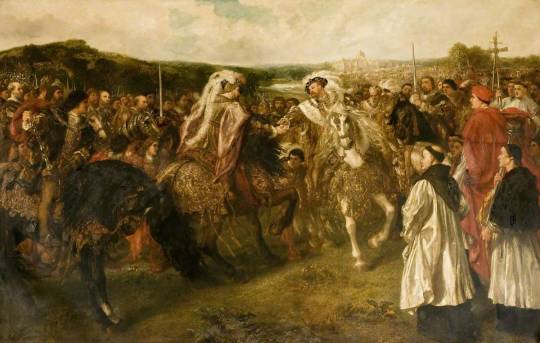
The meeting continued until the 24th of June. As Jean du Bellay reported in his papers, the two sovereigns decided to pass their time “en déduit et choses de plaisir” (in other words, in entertainments and pleasures), leaving negotiations to their councilors. For nearly two weeks, it was a mind-blowing and most eccentric display of riches and extravagance, which included, for example, “a forest of exotic pavilions” to house the English Court, “a wooden and canvas palace” to act as the King’s Chamber, as well as “two wine fountains flowing with red wine”. Every day, François and Henry were appareled in their most fabulous clothes as they did their best to outshine each other; their courtiers dressed in “velvet, satin and cloth of gold”. Those days were full of unprecedented festivities and merry jousts, lots of music and various games, as well as entertainments such as archery displays and wrestling between Breton and Cornish wrestlers. There were feasts in which the rulers entertained each other’s queens, as if swapping queens for an evening and allowing them to act as a hostess. On the summit, there was so much cloth of gold displayed on the tents and clothes that the site of the meeting was named after it.
The rest of the meeting, including the wrestling match between François and Henry, will be covered in another article next week.
All images are in the public domain.
Text © 2019 Olivia Longueville
#King Francois I of France#King Henry VIII of England#royals Cardinal Wolsey#the Field of the Cloth of Gold
40 notes
·
View notes
Text
Coronation of Anne Boleyn
Anne Boleyn emerged from the Tower of London at 5pm on Saturday the 31st of May 1535. She had spent the previous days in the queen’s chambers in the Tower. According to contemporary sources, the last day of spring was bright and warm, and the sky was an unbroken azure, spreading out above Anne in a serene canopy. It must have seemed to her that nature itself foreshadowed her success as the soon to be Queen of England and Henry VIII’s wife.

Anne was dressed in the French fashion. The coronation procession from the Tower was en-route for Westminster. It was headed by twelve servants of the new French ambassador to England – Jean de Dinteville, who was King François I’s maître d’hôtel. This illustrates Anne’s pro-French preferences, which her numerous foes considered unpatriotic, calling her a Frenchwoman. This, nevertheless, was true in many aspects because Anne loved France, French culture and fashions.
Then appeared the gentlemen of the royal household, who were by tradition the eyes and ears of the reigning monarch whom they served. Next came the nine judges clad in their scarlet gowns and hoods, followed by the Knights of the Bath. Then moved the state council, the ecclesiastical magnates, and the peers of the realm. At last, behind them emerged the queen’s fabulous litter.
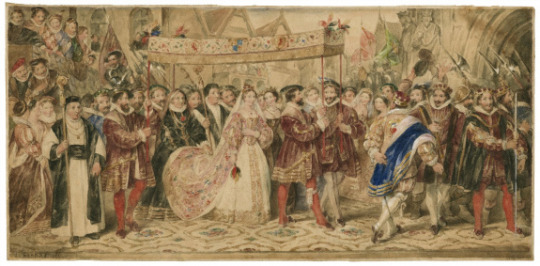
Eric Ives describes Anne’s appearance and her attire:
“She {Anne} was dressed in filmy white, with a coronet of gold. The litter was of white satin, with ‘white cloth of gold’ inside and out, and its two palfreys were clothed to the ground in white damask. In ravishing contrast was the queen’s dark hair, flowing loose, down to her waist. Over her was a canopy of cloth of gold held up by the barons of the Cinque Ports. Then came her own palfrey, also trapped in white. Twelve ladies in crimson velvet rode behind.”
Several more riders and carriages, as well as thirty gentlewomen on horseback, each of them richly attired, were followed by the king’s guard in two files, one on both sides of the street. All of the servants in the livery of their masters or mistresses were at the end of the long procession. Most definitely, many of them did not support Anne and viewed her as the usurper of Catherine’s place in the king’s affections, but they participated in the coronation out of duty and fear, for they would find themselves on the receiving end of the king’s wrath. And Anne was truly magnificent!
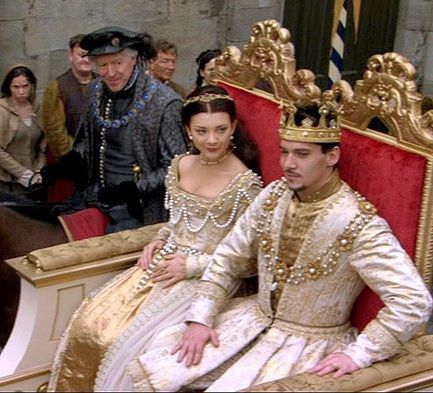
Observers reported that some notable people were missing in the cortege. Neither the king’s sister, Princess Mary Tudor, nor her daughter, Frances, was present, nor Lady Elizabeth Stafford, Duchess of Norfolk. Anne’s step-grandmother – Agnes Howard née Tilney, Dowager Duchess of Norfolk – rode in one of the carriages, along with either Anne’s mother, Lady Elizabeth Boleyn, Countess of Wiltshire, or Margaret Wotton, Dowager Marchioness of Dorset. However, the absences of the king’s sister and her daughter, Frances, can be easily discounted: Princess Mary Tudor had suffered from consummation for months and was very ill at the time of the coronation, while her daughter was barely out of childhood. The Duchess of Norfolk could have chosen to stay away from her ruthless husband, from whom she had separated in 1534 after their notorious quarrel. Thomas More, another doubter, was also missing, as he deliberately refused to attend.
For the inhabitants of London, this was their first glimpse of the scandalous, extraordinary woman who had changed the life of the country. For Anne, the coronation procession was her first chance to see the reaction of the English people to her new station. Hostile accounts disparaged everything: according to a report that reached the Imperial court in Brussels, the crowds did not cheer and take their hats and toques off when Anne passed. Some say that later, Anne complained to Henry about the cold reception with gloomy throngs on the streets. At the same time, Eric Ives thinks that spectators were ‘more curious than either welcoming or hostile’, so perhaps the most negative things from the coronation reports should be given little credit to.
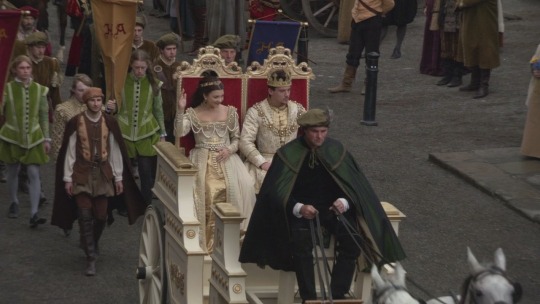
Disappointed by their reaction, Anne must have felt a blend of dejection, anxiety, pride, and triumph. Regardless of their opinion of her, her beloved Hal chose her to be his queen, and soon she would give the country a long-awaited male heir. Anne was heavily pregnant at the time of the coronation, and I can imagine her placing a hand on her swollen stomach, hidden by her gown, as she thought of a Tudor prince she presumably carried. Defiance was one of her most controversial qualities, and she had committed her first act of defiance of social norms years ago, when she had accepted the monarch’s marriage proposal while Henry was still married to Catherine of Aragon. As she contemplated the sullen people who did not want her to be their queen, she probably decided that if defiance was her destiny, she would be defiant again against all the rules if necessary.
What shall this day bring to me, June?
A brilliance with every summer hue:
The cloud-white dream of happiness,
Shot with the primrose sunshine through…
Or shall my coronation bring me pain,
People do not want me, their stillness say it,
The day will see me crowned despite them,
Yet, making ancient rhyme of lovers sore,
As if my joy is dead, my sadness lingers yet.
Oh, Henry! They love you, their dear prince,
Will you work to make them favor me too?
Some say your love is like a flight of doves –
With wanton wings, with promises and ways,
But flashing white against the sky only to die.
You may love, and sigh, and soon forget?!
I do not believe! You are my Hal forever!
A thousand roses will blossom red for us,
And a thousand hearts will be gay, I pray,
For the summer of love lingers just ahead,
And our boy is on his way to a Golden age,
Fate will have him born in autumn for us.
The moon and the stars will weave new spells
Of love – for my Hal, for me, and for our boy,
The music of marriage bells will sound to us.
Oh, sadness – stay behind and die in May!
I’ve started writing a lot of poetry as of late, and I cannot explain why I need it. Now I can write both prose and poetry, and it is not difficult for me at all. In this poem, which I composed to describe Anne’s feelings during her coronation procession, I strove to stress her strong faith in Henry’s love and in her happiness with him, and to remind of their expectation that the child in her belly was a boy. The reference to England’s Golden Age foreshadows Elizabeth I’s glorious reign, but at that time, Anne and Henry could not know about it. I hope you like this poem.

Soon the coronation party made its grand entrée into the City of London. During the reign of Henry VIII, this historical place was mostly confined to that small area with a population of about 100,000 people. The City was the center of business and finance, where trade guilds and livery companies elected the Lord Mayor every year. Since the days of William the Conqueror, the City has retained its independence from royal interference. Thus, Anne’s coronation procession was a significant event aimed at showing the king’s second spouse to the population of London.
There were 6 traditional points for pageants through the city and additional 3 locations, each of them opulently decorated for Anne as a sign of King Henry’s undying devotion to her. On the 1st June of 1533 after what must have seemed an eternity of waiting, the coronation procession entered Westminster. The witnesses began assembling in Westminster Hall from 7am, but it was just minutes before 9pm that Henry’s wife appeared there.

Anne must have breathed out a sigh of relief as they approached Westminster Abbey, where she would finally be crowned; she was in a family way, so she must have been tired, in spite of her exhilaration. Climbing down from her litter, she and her ladies set out along a route carpeted with cloth of blue ray all along the several hundred yards between the dais of the hall and the high altar of the abbey. Anne was watched by all the peers of the realm and foreign ambassadors, aldermen and judges in scarlet, the monks of Westminster and the staff of the Chapel Royal, all in their sumptuous copes, as well as four bishops, two archbishops and twelve mitred abbots in full pontificals. The abbot of Westminster had his complete regalia.
Ives describes Anne’s appearance in Westminster in these moments:
“Anne was resplendent in coronation robes of purple velvet, furred with ermine, with the gold coronet on her head which she had worn the day before, though it is not clear that she followed tradition by walking barefoot. Over her was carried the gold canopy of the Cinque Ports, and she was preceded by the sceptre of gold and the rod of ivory topped with the dove, and by the lord great chamberlain, the earl of Oxford, bearing the crown of St Edward…”
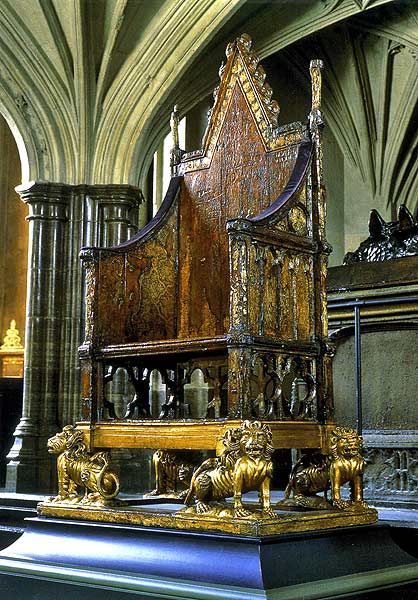
On the way to the high alter, Anne was supported, according to custom, by the bishops of London and Winchester. The Dowager Duchess of Norfolk carried her long train, and a myriad of her ladies and gentlewomen, each of them accoutered in scarlet with appropriate distinctions of rank. Perhaps having an enigmatic expression on her face, Anne seated herself into St Edward’s Chair, draped in cloth of gold. The grand chair was situated on a tapestry-draped dais two steps high, which was itself set on a raised platform carpeted in red. For a few moments, Anne sat there before she stood up, and the official ceremony of her coronation started.
A solemn mass was performed by the bishop of Westminster. Archbishop of Canterbury, Thomas Cranmer, who supported and adored Anne, prayed over her as the royal wife prostrated herself before the altar, despite her pregnancy. She was anointed by Cranmer before she walked back to St Edward’s Chair, where the archbishop crowned her and handed to her the sceptre and the rod of ivory. It is remarkable that Anne was the first female monarch who was crowned with the crown of St Edward, which was previously used to crown only a reigning ruler. This was King Henry’s obvious attempt to make others see the significance of his marriage to Anne.
A bit later, the heavy crown of St Edward was replaced with a lighter one, of course for the queen’s convenience. The service continued: Anne took the sacrament and made the offering at the shrine of the saint. As his beloved cemented her place in history as the new Queen of England, King Henry watched the ceremony from the special stand from behind a latticework, which had been erected in the abbey so that the sovereign could see everything incognito.
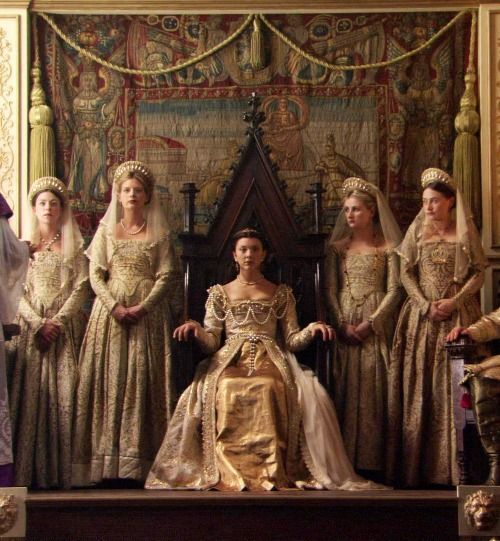
This mystique of monarchy belonged to Queen Anne Boleyn. At that time, she could not predict that in about three years, she would die on her husband’s orders for crimes she did not commit. Her emotions must have alternated between celestial delight, unutterable joy, and a feeling of unprecedented triumph. It seemed to Anne that a golden future stretched before her, a future composed of nothing but hope, new victories, and contentment.
The sun has shone upon all of me and fed
My heart and soul’s rhythms with light,
Raised me from dust to a rose, big and red,
Now I’m Henry’s queen, my life is bright!
A white star-flower of joy I will encounter
As sweet darkness envelops the earth
This night – no, not my wedding night,
But the first night of me being a queen.
In the dark, my Hal is still my sun of life,
He will guard my body and sleep tonight,
Holding all the starts in the sky true to us,
Reassuring me that we will defeat any foe.
In the morning, as I will open my eyes again,
From heaven, Hal’s sun will stoop to breathe
A flower of our love into the air in our room.
Surely, my life is now not beneath my Hal’s,
For I became his true queen in Westminster,
Beloved forever and feeling his kindness,
His care for our son growing inside me.
All make me believe it will last forever.
So, from the ashes of my odd sadness,
That lingers in my bosom like a dirge,
Will beauty and hopes grow in my life.
I’ve also written the poem describing Anne’s feelings after her coronation. I may be wrong, but I do not think she had any fears about her future at that time. I believe that Anne loved Henry, perhaps not from the very beginning of their romance, but she fell in love with him somewhere along the way. The long way to their wedding and Anne’s coronation. Nonetheless, the mentioned “odd sadness” foreshadows that Anne’s happiness with Henry would not last long. The “odd sadness” lingers “like a dirge”, which foreshadows her tragic death after an awful lot of unhappiness Anne would experience in her marriage to the king after his passion for her cooled off.

And so far, the nobility of England saw Anne being crowned and accepted or were forced to accept her as queen in the sight of God. Whatever Anne’s fate would be, the mystique of a queen was unbreakable even after her death.
William Shakespeare would declare a generation later:
“Not all the water in the rough rude sea
Can wash the balm from an anointed king.”
_________________________________________________
“Two poems were written by Olivia Longueville
All images are in the public domain.
Text © 2019 Olivia Longueville
#Anne Boleyn#queen anne boleyn#Boleyn#King Henry VIII#Tudor History#Tudor period#the Tudors#henry VIII of england#Tudor#henry viii#royals#coronation
16 notes
·
View notes
Link
I’m sharing with you my post about Anne Boleyn’s coronation. I wrote two poems describing Anne’s feelings on that day, and I hope you like them.
9 notes
·
View notes
Link
On the 25th of May 1555, Henri d’Albert, King of Navarre, died at Hagetmau. He was married to Marguerite d’Angoulême, the beloved sister of King François I of France. Their only surviving daughter, Jeanne, became Queen Joan III of Navarre upon Henri's death.
3 notes
·
View notes


